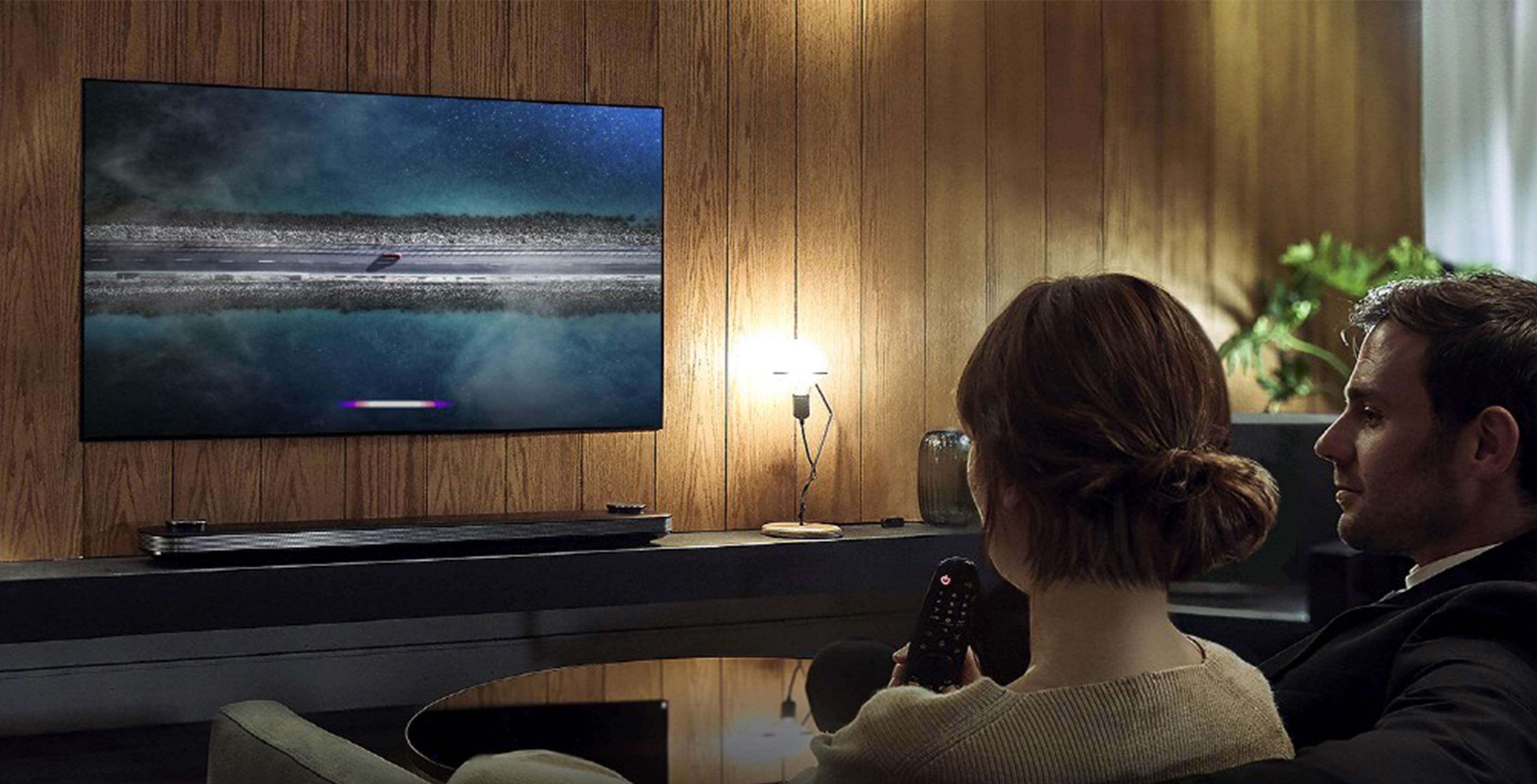
LG’s 2019 television lineup is set to borrow a page from modern smartphones by leaning heavily on software to enhance the user’s experience.
The South Korean company is still pushing screen resolution boundaries by selling two 8K sets. The first, the Z9, is an 88-inch OLED TV, while the second, the SM99, is a 75-inch LCD TV. That said, most of the highlights of the Z9 and SM99 — and, for that matter, the company’s other upcoming TV sets — are software based.
LG is employing a first-party component called the “Alpha 9 (α9) Gen 2 intelligent processor,” as well as deep learning algorithms to enhance its TV sets. The tech takes into account factors like lighting and ambient noise to adjust screen and audio settings.
This is similar to how Apple’s HomePod optimizes its sound profile to suit the room its in.
The company’s flagship OLED TVs, the Z9, W9, E9 and C9 series, along with its best LCD display-based sets will use the new Alpha 9 AI processor. On a side note, the W9 is the company’s latest crack at the wallpaper TV, but there are no specs to see if it’s thinner than last years model.
Alpha 9 should be the most beneficial by making contrast pop on some scenes. It can even “intelligently adjust Dolby Vision content,” according to LG’s January 3rd press release. This means that users should see really bright pops of colour and deep blacks.
In terms of sound quality, the Alpha 9 processor can even mix audio so that the TV set sounds like a 5.1 surround sound system. The flagship TVs will come equipped with the Dolby Atmos virtual surround sound standard to make sure users have a great audio experience right out of the box.
Another software feature that’s making its way into tons of gadgets is digital assistants. LG is enabling both Google Assistant and Amazon Alexa on some of its 2019 TVs. The company says users can change channels by using Alexa voice control.
LG is rebranding its top-of-the-line LCD TVs to “NanoCell” TVs since they lean heavily on its ‘NanoColour,’ ‘NanoAccuracy’ and ‘NanoBezel’ technologies.
NanoColour refers to the technology that helps push a wide colour gamut onto the TV. NanoAccuracy is a new tech from LG to help the TVs maintain consistent and accurate colours at wide viewing angles. Finally, NanoBezel, of course, refers to the thin bezels that LG’s LCD sets have this year.
LG doesn’t mention what kind of backlighting that the LCD sets have, so hopefully the tech giant will share more information at CES.
All of LG’s OLED TVs and some of its NanoCell (LCD) sets are going to have ‘HDMI 2.1’ ports to allow the TVs to support frame rates of up to 120 frames per second. HDMI 2.1 also supports ‘eARC’ which allows users to integrate the new TVs into high-end home theatre systems easily.
For gamers, the TVs support variable refresh rates and an automatic low latency mode. These technologies help the TV to keep up with the uneven frames per second that often happen when playing video games so that there is no screen tearing.
A lot of these settings and feature have been around for a while in PC monitors and speakers, so it’s nice to see them come to high-end TVs where they can improve on the TV watching experience.
All in all, it’s hard to judge these TVs without seeing them, but the automatically adjusting sound and picture settings seem like something that will make the TV watching experience more seamless for almost all users.
Source: LG
MobileSyrup may earn a commission from purchases made via our links, which helps fund the journalism we provide free on our website. These links do not influence our editorial content. Support us here.




